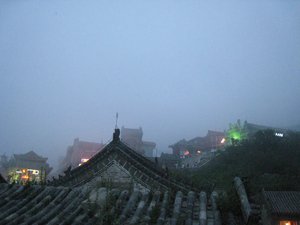
Mel Chin
Mel Chin (born 1951 in Houston, Texas, USA) is a conceptual visual artist. Motivated largely by political, cultural, and social circumstances, Chin works in a variety of art media to calculate meaning in modern life. Chin places art in landscapes, in public spaces, and in gallery and museum exhibitions, but his work is not limited to specific venues. Chin once stated: “Making objects and marks is also about making possibilities, making choices—and that is one of the last freedoms we have. To provide that is one of the functions of art.”
In 1975, Chin graduated from Peabody College in Nashville, Tennessee. Shortly after, in 1976, Chin created See/Saw: The Earthworks for Hermann Park in Houston, Texas, where the artist manipulated two sections of the park’s surface to create a kinetic, minimalist earthwork. In this mimic of a childhood pastime, Chin altered the landscape with an underground hydraulic device that allowed the participant to shift large sections of earth with their body weight. The title also questions psychological perception of what is above and below an objects surface. This piece addressed three of the major art trends of the time: minimalism, conceptualism, and earthworks.


Mel Chin
Mel Chin (born 1951 in Houston, Texas, USA) is a conceptual visual artist. Motivated largely by political, cultural, and social circumstances, Chin works in a variety of art media to calculate meaning in modern life. Chin places art in landscapes, in public spaces, and in gallery and museum exhibitions, but his work is not limited to specific venues. Chin once stated: “Making objects and marks is also about making possibilities, making choices—and that is one of the last freedoms we have. To provide that is one of the functions of art.”
In 1975, Chin graduated from Peabody College in Nashville, Tennessee. Shortly after, in 1976, Chin created See/Saw: The Earthworks for Hermann Park in Houston, Texas, where the artist manipulated two sections of the park’s surface to create a kinetic, minimalist earthwork. In this mimic of a childhood pastime, Chin altered the landscape with an underground hydraulic device that allowed the participant to shift large sections of earth with their body weight. The title also questions psychological perception of what is above and below an objects surface. This piece addressed three of the major art trends of the time: minimalism, conceptualism, and earthworks.
Latest News for: mel chin
6 incredible California literary gems you can experience
Jocktails
aa-acrossamericabriefs040719
 The Philadelphia Tribune
06 Apr 2019
The Philadelphia Tribune
06 Apr 2019
Artist Mel Chin to Speak at Appalachian April 2 to Kickoff the Annual Climate Stories Collaborative
Man found guilty in rape, murder of former central Pa. artist
White Sox players fully back shortened version of softball after playing in inaugural Summer Slam competition
Five-day photo+sphere pairs art and science
Become part of SculptureX 2018
Become part of SculptureX 2018 with 'Two Me'
Times Square Drowns in a Climate Art Exhibit
Bleached racists and lynching trees: the show that's targeting white supremacy
Mel Chin’s Social Surrealism
- 1
- 2
- Next page »
Article Search
Most Viewed
WorldNews.com | 24 May 2019
IFL Science | 22 May 2019
Philadelphia Daily News | 24 May 2019
Traverse City Record-Eagle | 24 May 2019
Independent online (SA) | 24 May 2019





















